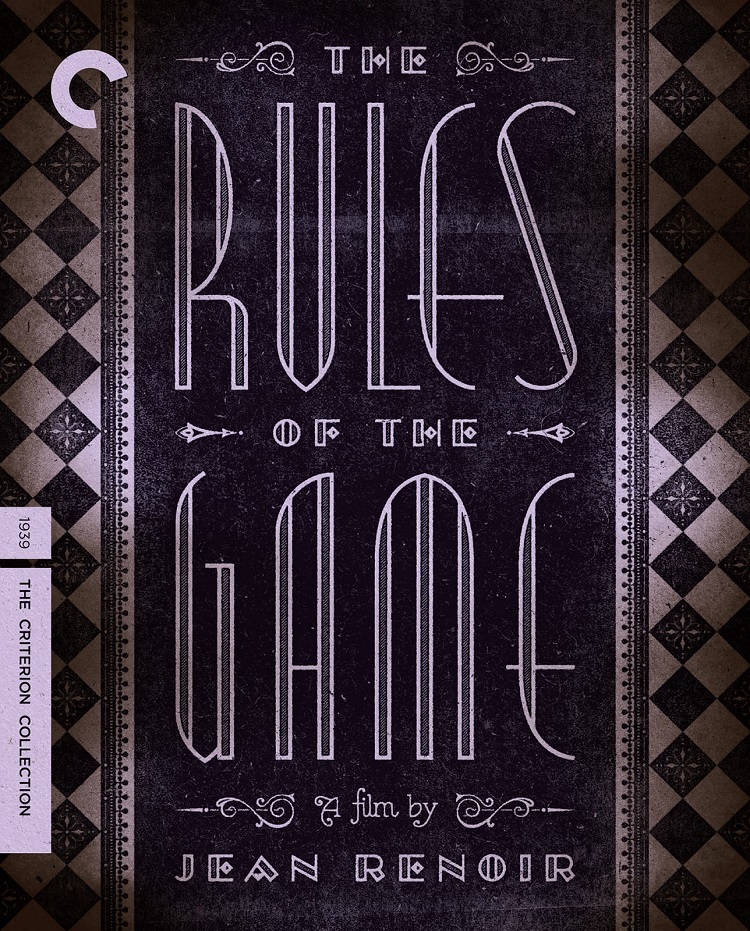
On the brink of WWII, Jean Renoir—inspired by baroque music and an opera, Les Caprices de Marianne—took his collaborators to Sologne, France. There, his ensemble (mostly) improvised The Rules of the Game to life. He redefined the bedroom farce and made one of the most revered films.
Just last month, the Criterion Collection released it in 4K UHD.
If we consider the film almost disappeared, we can feel relieved. At the 1939 French premiere, the audience loathed it. The film bombed. Renoir himself butchered the movie, then withdrew it. The Nazis later banned it and destroyed the original negative. The movie reappeared in the late ’50s, reconstructed to its current 106-minute length. (Renoir approved the resuscitated cut. It’s longer than the original and doesn’t share all the same scenes.) Today, the film breathes as Renoir intended.
Until this month, I’d never seen it. I have no unique words to offer on it.
The Rules of the Game is set in a French chateau in 1939. It uses long takes and deep focus to satirize the petty scrapes of the haute bourgeoisie and those who serve them. The world is ablaze. In the countryside, these (sometimes casually antisemitic) fools are too blind with lovesickness (with silly shit) to even pretend to notice. For Renoir, everyone is worthy of ridicule: Among the elite upstairs are the Marquis Robert de la Chesnaye (Marcel Dalio), his wife Christine (Nora Gregor), his mistress Genevieve (Mila Parely), Andre the pilot (Roland Toutain), and his friend Octave (Renoir). Both Octave and Andre love Christine. Andre, a self-made star of the skies, learns the game has no rules. Downstairs, another triangle forms. Marcel (Julien Carette), a poacher-now-servant, chases Lisette the housekeeper (Paulette Dubost), angering her husband (Gaston Modot). As everyone loses their heads (for their own reasons, no matter how trivial), a case of mistaken identity ends in murder. With servants driving rabbits and birds into the elite’s crosshairs, a hunting scene foreshadows this moment. Renoir shows each animal’s death in unflinching detail.
In cinema, as in life, so much comes down to the details.
And The Rules of the Game profits by Renoir’s light touch. He neither judges nor guards the characters. (None are heroes or villains.) Sharply observed, they earn brief moments of affection. Renoir’s camera glides, too, emphasizing tight but spacious master shots. He’s not interested in cutaways to closeups; his lens wants you to see the chaos in motion, the actors playing, entering, and exiting at their chosen speed. (I am certain this movie, way more than most, informed director Robert Altman’s aesthetic.) Renoir’s ambivalence toward the people on-screen may, depending on your point of view, madden or thrill. Or both. His weightless, all-seeing camera and humanistic approach boost the film.
Given my belatedness, I know I should see The Rules of the Game again. I’m sure it has multitudes. I’m positive all the films it’s inspired have dulled me to the singularity of that which Renoir achieved. For now, color me…
Charmed.
The new Criterion 4K comes with an uncompressed monaural soundtrack. Considering that The Rules of the Game exists via the rescue of less-than-great prints, the 4K looks good—not velvety rich and super-defined, but smooth (if not altogether grain-free). The set has a Blu-ray of the movie with: an intro to the film by Renoir; audio commentary by film scholar Alexander Sesonske (read by director Peter Bogdanovich); a comparison of the film’s two endings; selected scene analysis by Renoir historian Chris Faulkner; excerpts from a 1966 French TV program by director Jacques Rivette; part one of a 1993 Renoir documentary by film critic David Thompson; a video essay about the film’s famous production/release/reconstruction; an interview with film critic Oliver Curchod; and interviews with Jean Gaborit and Jacques Durrand, set designer Max Douy, Renoir’s son (Alain), and Parely. The combo pack booklet includes an essay by Sesonske and writings by Renoir, Henri Cartier-Bresson, Bernard Tavernier, and Francois Truffaut. This booklet also has tributes by J. Hoberman, Kent Jones, Paul Schrader, Wim Wenders, Robert Altman, and others.